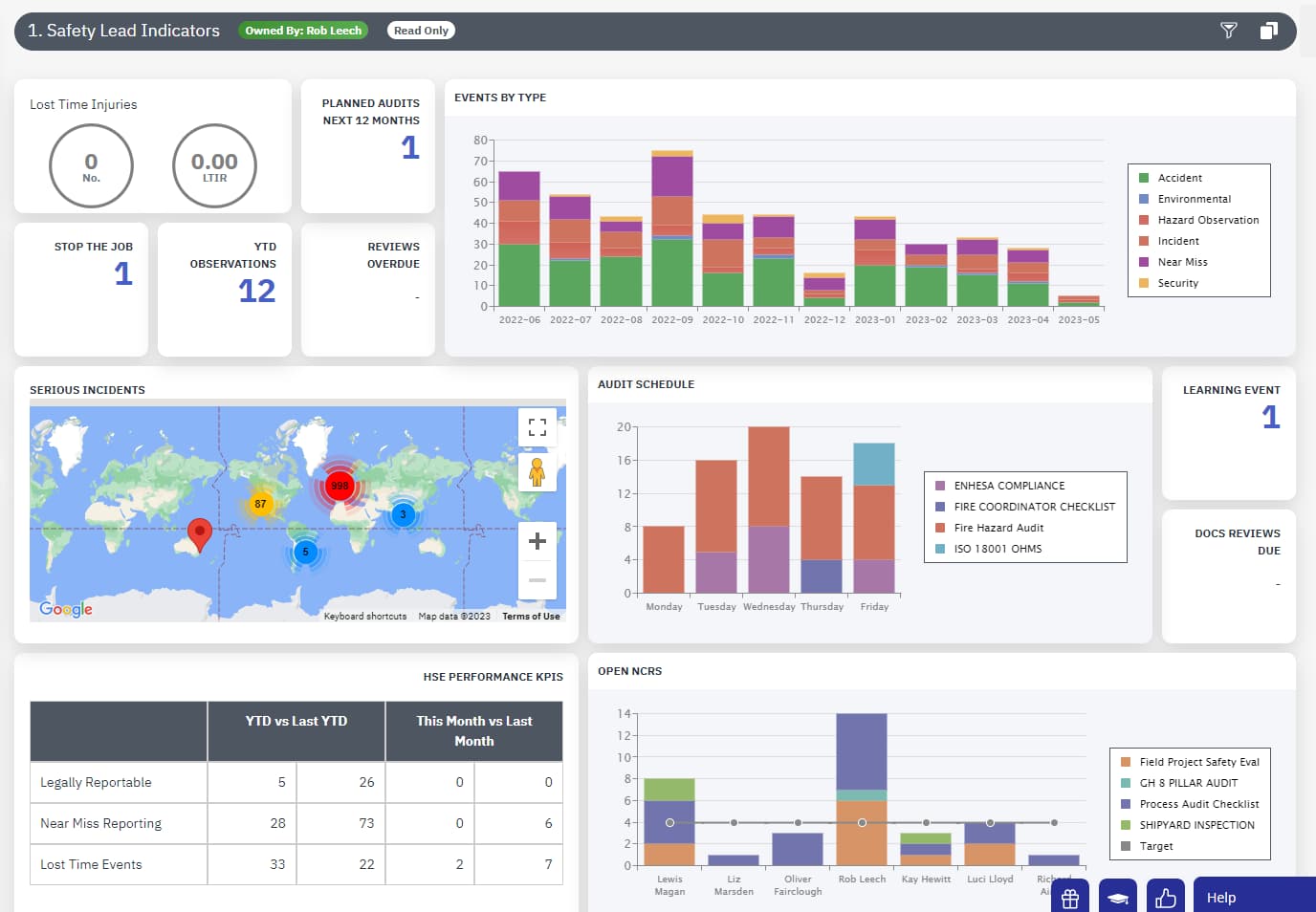
Health and Safety Audit Meaning & Definition
What Is a Health and Safety Audit?
A health and safety audit is an assessment of a company’s systems, procedures, and policies related to employee health and safety to ensure compliance with current regulations. Such audits are carried out by independent, certified consultants.
Health and safety audits are designed to identify any health or safety hazards, review the effectiveness of internal controls in place to manage such hazards, and to ensure compliance with OSHA or HSE standards.

Is your business conducting regular health and safety audits?
Health and safety audits are carried out for the following purposes:
- Identifying vulnerabilities and weaknesses in the safety measures taken by a company
- Reviewing compliance with applicable regulatory legislation.
- Recommending improvements for the safety measures and steps taken by an organization to protect the health and safety of its workforce.
The broader objectives include:
- Reaffirming the organization’s commitment to making the workplace safe and secure for employees
- Confirming that employees have received proper training and follow the safety measures introduced by the organization
- Reviewing and ensuring the accuracy of records related to health or safety incidents.
- Checking machinery and equipment, including the facility, to ensure that it meets safety requirements.
Why Is a Health and Safety Audit Important?
Companies of all sizes should consider regular health and safety audits due to several reasons:
- Health and safety audits help organizations understand the effectiveness of their internal safety program. It allows organizations to gain a more holistic picture of how well internal controls are working.
- Health and safety audits improve employee motivation, as they indicate the employer’s serious attitude towards the wellbeing of the workforce.
- Health and safety audits greatly reduce the risk of injuries or unforeseen safety incidents in the workplace as hazards are identified early on and appropriate measures are taken to mitigate risk. This also reduces the risk of production delays in facilities.
- Safety audits can improve a company’s image. It also protects the organization from negative publicity that could impact trade conditions.
The Key Stages of a Health and Safety Audit
There are several key stages of a health and safety audit, especially since they are quite different from a conventional safety inspection. Audits are more comprehensive and must be planned carefully.
Step 1: Documentation
Before the audit officially gets underway, managers and supervisors are responsible for gathering all the required documentation that auditors may need.
This includes official safety policy statements, records of safety procedures, safety roles or responsibilities, reports of health and safety incidents, contingency plans, safe machinery operational guides and more.
Any reports from a previous audit are also gathered at this stage.
Step 2: Gathering Evidence
IA team of auditors is then assembled, which is responsible for gathering evidence to accomplish the objectives of the audit. This part of the audit often involves several steps, including:
- Interviewing staff members: The auditors conduct interviews to determine whether the company actually complies with its health and safety policies. They gather information about any incidents, or key areas that need improvement.
- Reviewing safety measures: The team of auditors is also responsible for reviewing the safety measures and steps taken by the organization, and whether they’ve been enforced in the workplace or not.
- Compliance with government legislation: Do the safety policies comply with government legislation, especially HSE directives? Auditors carefully review the policies for compliance purposes.
- Safety protocols for operating machinery: The auditors also review any safety protocols in place for dangerous machinery in the facility.
- Reviewing records and documents: A thorough review of existing documentation, including any records of incidents in the past, is carried out by the auditors.
Step 3: Results Review
After completion, the auditor’s issue a report that focuses on important areas, such as comments on the company’s safety policies, areas of improvement, any missing documentation, or policies related to staff training.
This list of corrective actions is shared with the managers or supervisors, and to ensure compliance, a review date is often added to the report.
Step 4: Publishing the Report
Finally, the report, including the findings of the audit, is published and made available to all employees within the organization.
Internal or External Health & Safety Audits
Organizations have two options when deciding to conduct a health and safety audit: hire an external auditor or conduct an internal audit.
An internal audit can be conducted by a “competent person,” and most companies often assemble an audit committee that oversees the audit processes. In-house audits are obviously more cost-effective and offer greater control over the entire process.
However, for larger organizations, an external audit is the best option. External audits are conducted in line with the principles outlined in the HSE Best Practice Document HSG65. Moreover, external auditors are able to benchmark organizations against competitors, which could improve the company’s overall image.
How Often Should a Health & Safety Audit Be Conducted?
Ideally, organizations should conduct a health & safety audit at least once in a year. However, some businesses, especially larger organizations, conduct such audits more frequently to mitigate risks.
Health and safety audits are also recommended after a business undergoes significant change related to the technology in use or operational practices, or if the workforce composition drastically changes.
For instance, if a company launches a new plant, purchases handling equipment and machinery, and hires new employees in a separate location, conducting a health and safety audit is generally recommended.
Improve The Quality of Health & Safety Audits With H&S Software
EcoOnline’s Health and Safety software modules give businesses complete control over all H&S activities in the workplace. It features powerful reporting tools and lets safety managers create custom dashboards to gain more accurate insights from your company’s EHS data.
The mobile interface allows managers to engage offsite workers to gain access to business intelligence from different sites. These modules make it easy for businesses to improve HSE decision-making, build checklists, manage audits, and conduct more comprehensive risk assessments to make the workplace as safe as possible.




